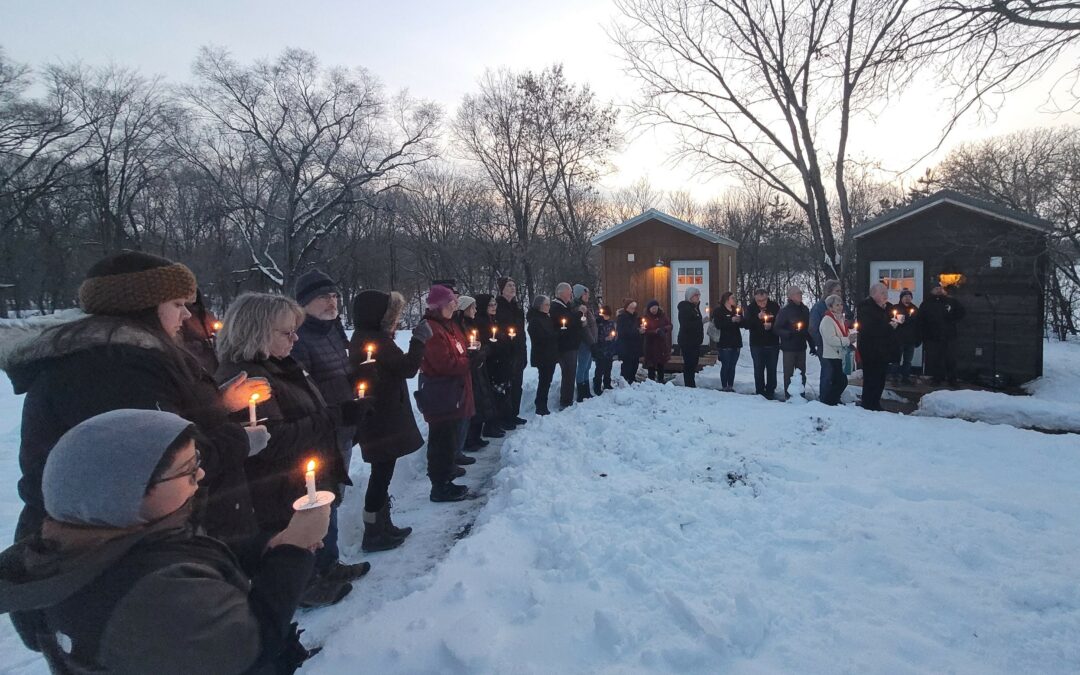For almost 25 years, Prince of Peace has owned the lot next door to the church — but what to do with the space? The congregation explored several ideas, long-time member Gus Haugan said, including creating an outdoor worship area overlooking the pond, creating gardens for refugees from Burma, or deepening the church’s commitment to community-first housing.
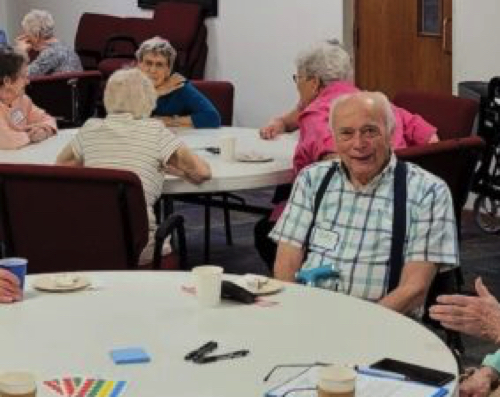
The gardens got planted, but no other plans came to fruition. Until this year, that is. Now, the lot next door is temporarily home to two tiny homes, and four people living in them.
Valerie Roy came to Prince of Peace last summer, at the time living in an old school bus that was parked on the property. She also introduced the church to the founders of Settled, an organization taking on chronic homelessness in our community. The tiny home provided by Settled that Valerie lives in now is much better suited to Minnesota winters.
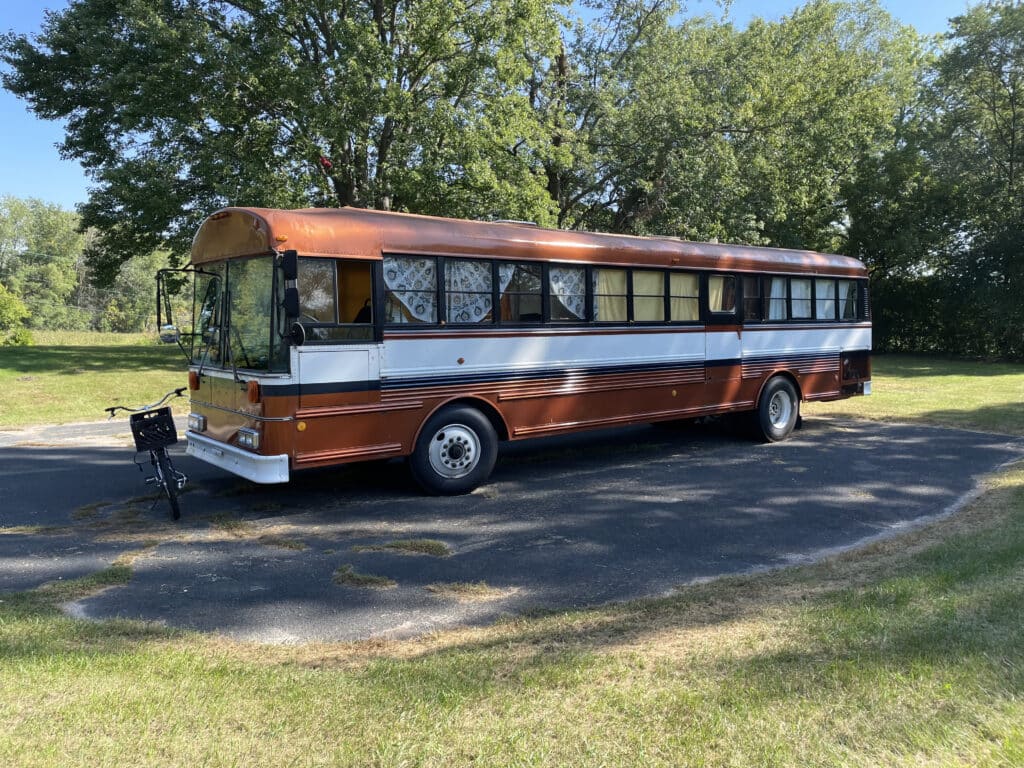
“I have to get my bearings again. You don’t just wake up in four walls and think you’re not homeless anymore,” Roy said. “I see a trauma doctor once a week to help me with that process. Four walls does not change homelessness, it takes a lot more than that.”
Since moving into the tiny home in December, Roy said the willingness the Prince of Peace community has shown to accept her has been “quite the miracle.”
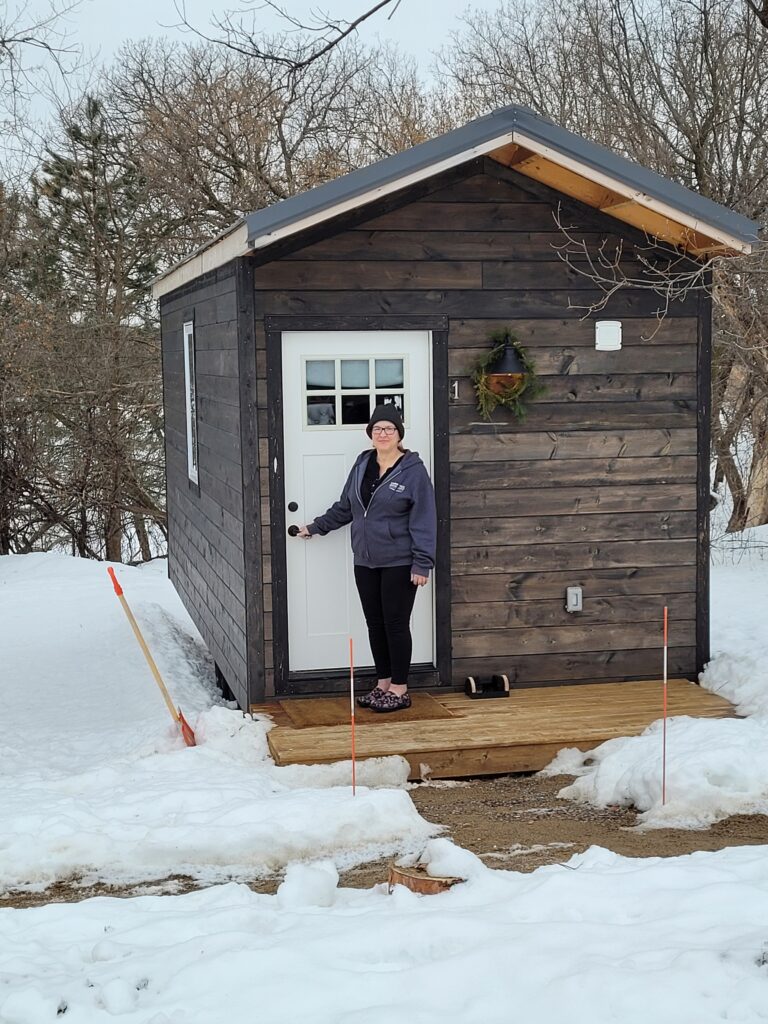
“It’s very comfortable and everybody’s been super welcoming,” Roy said. “Everybody has done a fantastic job becoming community and that’s what it takes to not be alone anymore. Homelessness is a prison of its own, very isolating.”
The other tiny home is inhabited by the Beary family — Mischa, James and Avia — as well as their dog Bella. The Beary family is a resource family that intentionally left their apartment behind to join Valerie in this new way of building a community alongside the church.
Inside the church is a “common house,” also outfitted by Settled. The room, vacated by the recent closure of the day care, now houses things like hot plates, a microwave, a fridge and freezer and dishes. Settled’s philosophy focuses on bringing people together for shared meals and conversations, and this communal space is an important part of that.

The tiny homes were funded and built by two other churches who, together with Settled, have formed a unique partnership to create an interim “Sacred Settlement” on the Prince of Peace campus. This isn’t the first time the church has explored creating community-first housing.
“A few years ago we had somebody come to our church for an adult class, … and she mentioned that there was a problem in the Roseville schools with a high number of families that didn’t have stable housing,” Haugan said.
From there, the church formed a committee for affordable housing, focused on learning more about homelessness in Roseville and trying to discern where the church could make itself useful.
For Roy, the community-first model using tiny homes is a better approach than homeless shelters.
“A homeless shelter is not helpful,” Roy said. “It’s just [that] nobody there is qualified as far as services go, conflict resolution, there’s no economic development, it is just a void. And [the community-first housing model] has all of the resources attached to it and then some.”
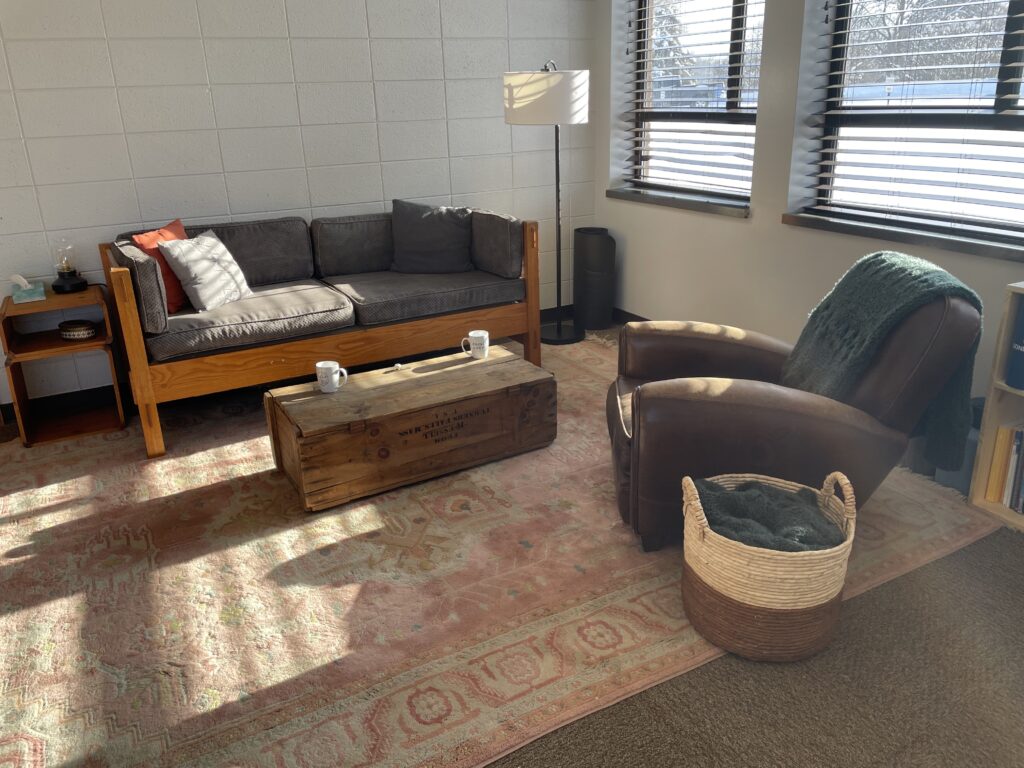
The tiny homes are not yet a permanent feature of the church campus, but they are a key stepping stone in the church’s interest in affordable housing and its dedication to supporting the community.
“I think it fits into our mission in that we think everybody should have a roof over their heads and they should have stable housing, something they can come back to every day,” Haugan said. “I think the whole thing fits in the idea that ‘well, what is God calling us to do as a congregation? What should we do about homelessness?’”
The affordable housing committee has been “spinning [its] wheels” for a few years, but they have learned a lot and are ready to go ahead and do something, Haugan said.
Any future projects will require significant buy-in from the congregation, Haugan said.
“I think it’s gonna take quite a bit of education for members of our church to understand this problem of homelessness and what’s the role of our church in all of this,” Haugan said.
“Rather than starting with this grand project we are starting with the tiny homes,” Haugan said. “It’s the beginning, more than anything. I don’t know how this is all going to pan out in the long run, but it’s a start anyways.”
This story was compiled and written by Marta Hill, a journalism student at Northeastern University and Pastor Melanie’s daughter.

